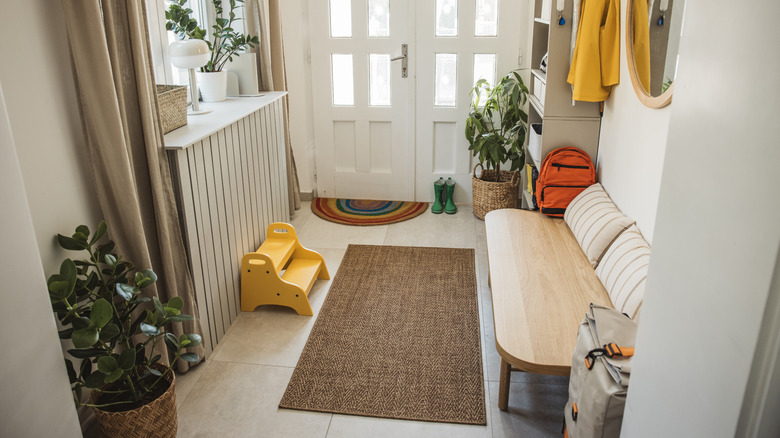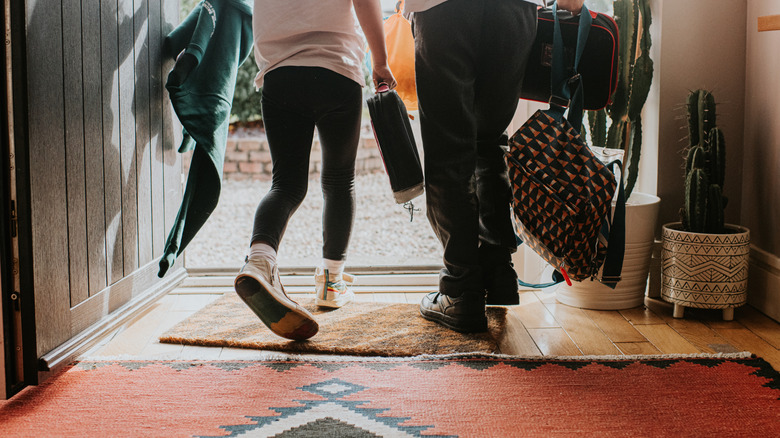How To Choose A Durable Rug For Your Entryway
Picture this: you finally bought a stylish entryway rug to make a great first impression. It looks just as you imagined. But there's just one thing — it's already showing signs of wear after only a few weeks on the job. Blame it on your pet's muddy paws or your kid's constant foot traffic. Either way, the colors have faded, the edges are frayed, and you're now on the hunt for a durable replacement. Because good looks alone aren't enough for such a high-traffic area, it's best to pick a material that suits your lifestyle and needs. For instance, sisal rugs can't repel water, but polyester ones can. Nylon rugs can be thrown in the washing machine, but those made of wool can't.
Before anything else, make sure the floor covering you choose for your entryway has a low pile or is woven flat. The shorter the fibers, the more resistant the rug, and the easier it is to keep clean (a much-needed feature considering all the feet that walk across it daily). As such, don't be fooled by high-pile rugs with their ultra-soft feel and cozy appearance when decorating your foyer. That's the last thing you need in a busy space if we're being practical.
The toughest materials for an entryway rug
Let's start with the natural fiber options. These may come with a higher price tag, but for good reason. They're better for the planet, have a longer lifespan, and can naturally fend off messes thanks to their wax-like coating. Wool rugs are a prime example, featuring strong fibers that resist stains, moisture, and fading. No wonder they can last for decades when properly cared for. On the downside, a little more TLC (and sometimes professional help) is required when cleaning a wool rug so it looks as good as new.
This brings us to the next high-traffic approved materials: sisal, jute, and seagrass. Their woven structure allows them to easily catch dirt, plus they hold up just fine with a quick shake and weekly vacuuming. High-quality rugs made from any of these materials typically have a lifespan of at least five years before looking tired and worn. The biggest drawback? These natural fibers don't handle moisture well and may deform or discolor when in contact with drenched shoes. Therefore, you'll definitely need to establish a "shoes off at the door" rule in this case.
Lastly, we have the synthetic equivalents, including polypropylene, polyester, nylon, and olefin. These guys are on the more affordable side, yet are also designed to handle the hustle and bustle of entryways. The difference is that synthetic rugs are likely to get worn faster. On the plus side, they're easy to clean in the washer whenever dirt, debris, and grime accumulate on the surface. Many are even labeled for both indoor and outdoor use since they can tolerate the elements like a pro.

